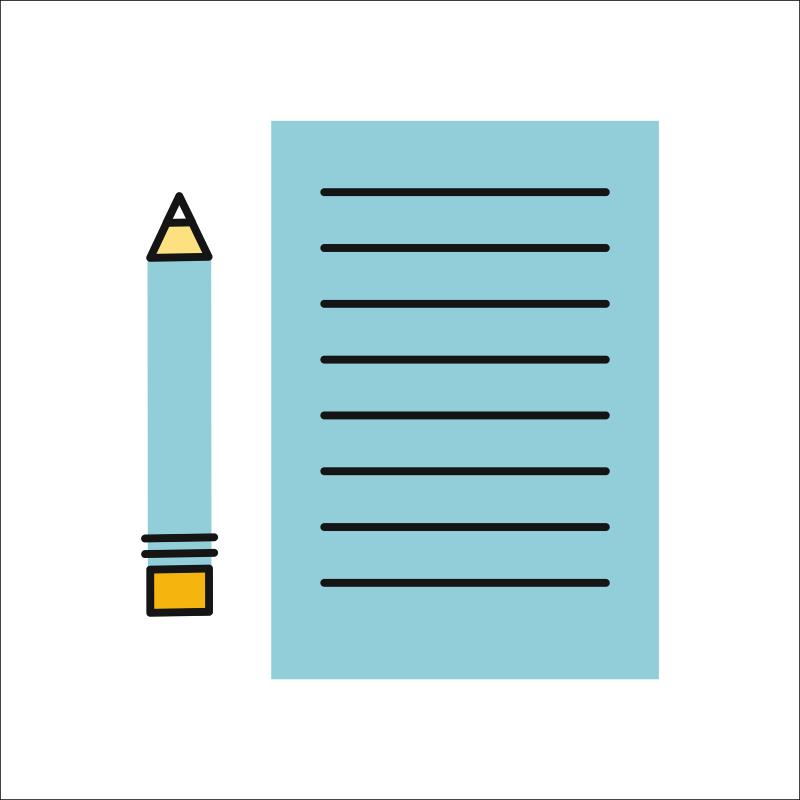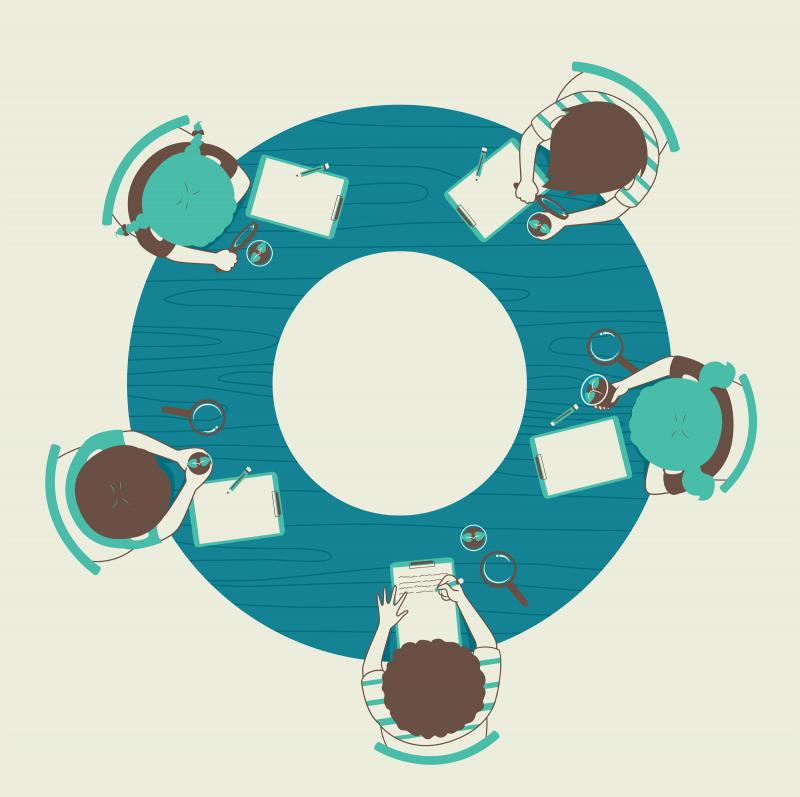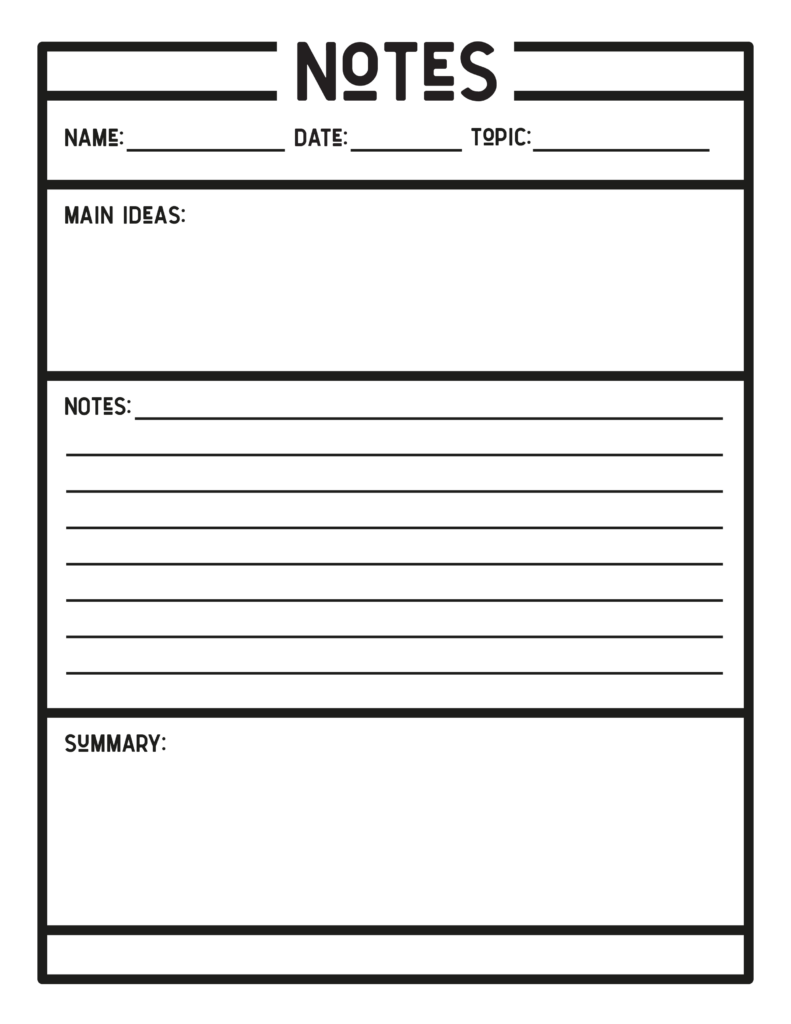
As students matriculate through their educational journey, they’ll find new experiences and challenges along the way. One challenge that comes up for many high-school students is the need to take notes quickly during lectures. Unlike elementary school or middle school, high school students are often imbued with a sense of responsibility in the classroom and expected to retain information. While note-taking is an effective tool to gain a deeper understanding of key concepts, many students struggle when studying their class notes because they fail to write down the main points and organize facts. And when don’t write down relevant information, it’s quite difficult to prepare for potential test questions.
Simply put, writing notes can be difficult. The good news is that we wrote this post to help! Below you’ll find 10 hacks for effective note-taking and 5 well-research techniques to improve your skills.
In this post:
- 10 Hacks to Improve Note-Taking
- 5 Well-Researched Note-Taking Methods
- Take Notes With This Free Printable

10 Hacks to Improve Note-Taking
1. Prepare to take notes before class begins.
Before you head into a physical or virtual classroom, it’s important to be prepared. Were you assigned reading? Have you given yourself enough review time to go over previous lessons? Be prepared by staying on top of class assignments, reviewing learning materials, and having the tools you need to take good notes.
2. Decide if you want handwritten notes or digital notes.
Before you start taking notes, it’s important to get into the note-taking mindset. Are you going to write notes by hand or will your teacher allow you to use a computer to take notes? Once you know how you’re going to take down information, grab a new notebook or start a new document in a word processor such as Google Docs or Microsoft Word and start writing!
3. Pay close attention to the lesson.
Taking effective and accurate notes requires great listening skills. After all, how can you capture key points if you aren’t listening? It’s nearly impossible! So, for those who want to take notes that will help with tests and assignments; paying close attention is imperative. For those who attend a traditional school, sitting in the front of the class is one way to stay on task. For those who attend virtual education programs, wearing noise-canceling headphones can help with focus.
4. Develop a note-taking system.
If you want to take better notes, it is important to develop a system. When you write notes by hand, do you include the date of each piece of paper? What about the class name and professor? Develop a system for note-taking. Doing so, and preparing your notebook or word doc beforehand, can save you time during the class and help you stay organized.
5. Abbreviate words to increase writing speed.
Need to take notes quickly? If you’re attending a class, workshop, or lecture series; you may need to hastily capture the main points of a conversation. One simple hack you can use to jot down notes rapidly is to abbreviate words. This technique can work for handwritten notes or note-taking done using a digital device. Simply shorten words that you use commonly so you don’t have to spend time writing them out longhand. For instance, if you’re taking notes for a History of Renaissance Art class, you could shorten that title to “Hist of Ren Art” or simply “Ren Art” to keep your word count down. Other abbreviations can take place throughout your note-taking session – just be sure to remember what your abbreviations mean. If you need help doing so, make a key for yourself in the header of the document or top margin of your piece of paper.

6. Make sure notes are legible.
When you take notes by hand, it’s important to write neatly. After all, what good are notes if you can’t read them? All of your hard work will be in vain if you can’t use your notes to work on a research paper, prepare for a test or review the material you just learned in class. So, try to write as neatly as possible. Or, use take notes digitally using a word document or note-taking app.
7. Take visual notes in addition to textual ones.
Think outside of the text box. When it comes to taking notes, who says you can’t use visuals to communicate key concepts and capture information? The best note is one that helps you retain relevant information from different aspects of a class, lesson, activity, or workshop. So, if you’re a visual learner or you think visual note-taking would work for you; try adding drawings, charts, and graphs to the mix! You may be able to gain a more in-depth understanding of a lesson when you visualize the main points.
Visual note-taking can include:
- mind maps
- diagrams
- sketches/doodles
- photographs or screenshots
8. Take audio notes if permitted and accessible.
One way to practice active learning is to engage multiple senses when introducing a lesson. So, evaluate how you take notes and if you could expand on it a bit to get a better educational experience. Have you ever considered taking audio notes? If it is permitted in your class and accessible to you; recording audio is one method you can use to capture the lesson and review abstract ideas. Just be sure to get the expressed permission of the person who will be talking.
9. Organize ideas by grouping important points or interlocking topics.
Think about what you’re covering in class. What topics overlap? When you organize and review your notes in preparation for a test or research paper, one helpful tip is to organize them by ideas, main points, or interlocking topics. Finding similarities in the concepts you’ve been exposed to can help you gain a more in-depth understanding of the lesson. And while we can’t say it with any certainty, many would argue that better notes and proper review time can lead to better grades.
10. Add your ideas and write down questions
When you write notes, it’s important to think about the concepts being presented. Don’t simply jot down everything the teacher or lecturer says. Instead, try to interpret some of the information and write down questions as they come up. When class time permits, ask those questions to get more insight from the educator or revisit them when you study. In addition to the key points, make sure you capture your interpretation of the lesson, as it may lead to a deeper understanding as information is presented.
5 Well-Researched Note-Taking Methods

The Cornell Method
The Cornell Method, developed in the 1950s by scholars at Cornell University, has become a common note-taking method, used by many around the world. This method goes beyond organizing key points – it breaks information down into three sections:
- The cue is a narrow column used to organize ideas possible quiz questions, key characters, etc. In a nutshell, this section is dedicated to recalling over-arching topics.
- The note section is a space dedicated to expanding on the ideas written in the cue section. In this section, it’s important to summarize key points and indent when getting into the specifics. When writing details, jot down the key topic then indent additional information using bullet points, roman numerals, numbers, or letters – your choice.
- The summary section is used to synthesize information and interpret it in a few sentences. Much like the cue section, the summary section can be simple and succinct.
Mind-Mapping Method
Mind-mapping is a fun note-taking method that can be implemented in classes that cover overlapping topics or abstract ideas such as philosophy, chemistry, anthropology, or art history class. In this method, a map is used to make visual notes on broad ideas and supporting facts or sub-concepts that are interconnected. For instance, if you were using the mind-mapping method to review a lesson on Renaissance paintings, you may include geographical locations in the center and branch off from there to include artists from each location, their medium, and the timeline in which they worked.
For visual learners or those who want to capture complex ideas on one page, mind-mapping can offer a simple solution.
The Outline Method
If you’re searching for a simple way to take notes, you may find a solution in the Outline Method. Easily adopted by high school students, college attendees, and many others; this method condenses concepts into key points and supporting details.
When implementing the Outline Method, students highlight a few key ideas that will be presented in a lesson and then expand on those ideas in-depth in a sub-section on their paper or word doc. This method of taking notes is simple and effective. We recommend using it when you want to organize facts with ease, review the relationship between key concepts, or quiz yourself on the information presented in class.
The Sentence Method
The Sentence Method is simple and used by many across the world. It’s a simple method of transcription where you write down the things the presenter is talking about, as best as you can, or capture key ideas using full sentences to explain the lesson. This method is rather straightforward but requires some skill – after all, it can be hard to capture one’s words, if one speaks rapidly, and writing in full sentences can take a while (especially for notes written by hand).
However, once perfected, the sentence method can help students briefly touch on key points and highlight ideas the educator emphasized throughout the lesson.
Flow Notes Method
Similar to mind-mapping, the Flow Notes Method implements the use of visual aids to capture ideas. Instead of transcribing a lecture, like in the sentence method, the Flow Notes method involves doodling, drawing diagrams, illustrations, and charts to capture a general idea about a lesson. This method is great for a visual learner or someone who wants to capture information quickly.
While it can incorporate different features to paint a big picture, the Flow Notes method is best paired with one of the other note-taking techniques listed above to gain a deeper understanding of the concepts presented.
Take Notes With This Free Printable





